These M’sians hope to make tuak our national liquor by bringing them into Klang Valley bars
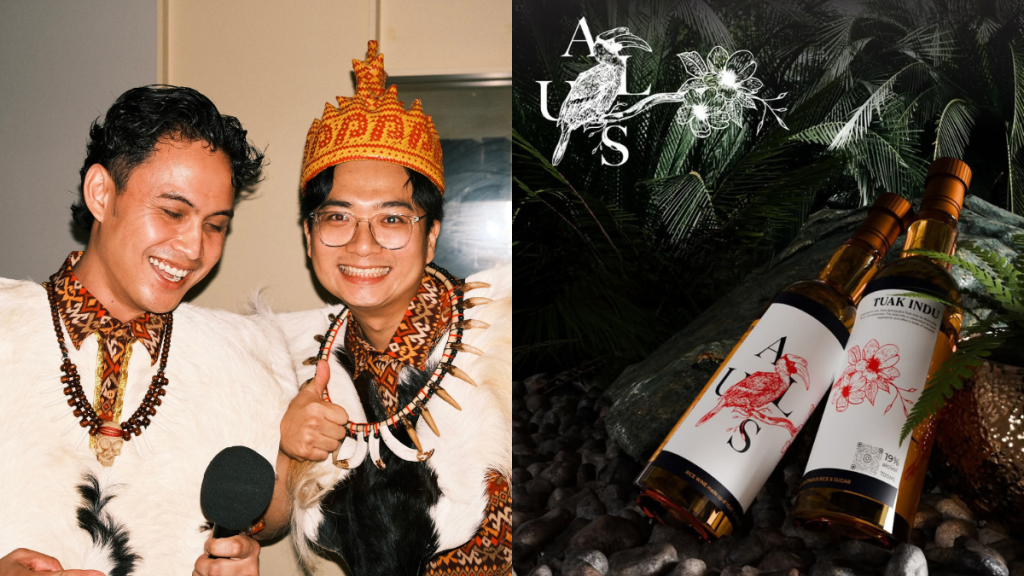
Over the years, my drink of choice has evolved significantly.
From the broke college days of vodka and coke to having a glass (or two) of Moscato every other night, my choice of poison has reflected my state of life, being a loyal evolving companion throughout my journey (you might see this as addiction, I see it as growth).
The latest development? Tuak!
A sweet yet subtle liquor that offers complex flavours and a smooth drinking experience, quickly making it my go-to drink at bars and speakeasies, it eventually led me on a search for the best tuak out there.
Enter Tuak Alus
I first learnt about Tuak Alus at one of their pop-ups held at The Row KL.
“Would you like to try our tuak?” said the seller, offering a selection of three flavours.
And how could I say no to free drinks? (Please note that I am not an alcoholic. I just like good booze, there’s a difference.)
As I had always liked pandan I had chosen to go with that first.
Even before taking a sip from the plastic shot cup it was poured into, the delightful tropical and creamy aromas of pandan wafted up my nose, adding to the complex flavours of the rich and sweet yet boozy rice wine.
The same delights were imparted by Tuak Alus’ two other flavours, Indu and Laki, offering a sweet palm sugar profile and a stronger boozier flavour respectively.
And although I was already rather familiar with the Sarawakian liquor, Tuak Alus’ complex notes enticed me enough to pitch their story to my editor, which is why you’re currently reading this.
Humble beginnings
First founded by three friends (two Sarawakians and a self-proclaimed tuak lover), Tuak Alus came about from a feeling of homesickness.
“Tuak Alus began with a shared commitment to recreating the taste that held endless memories during Gawai. Coupled with a fiery passion for Sarawakian culture, we felt the world needed to experience this traditional drink too,” founders Ayden Chong and Raffly Langi told Vulcan Post.
Before founding Tuak Alus, Ayden was in marketing before switching over to recruitment, which he’s been doing for the past five years, along with a side gig running a durian and coffee business.
Kuching-born master brewer Raffly, however, holds a much different story. He was working as a service engineer since 2014 until being retrenched during the COVID pandemic led him to fully commit to Tuak Alus.
“It all started in a condo room with just the passion to brew and R&D a high-quality tuak here in Semenanjung,” said the founders, adding that a mere RM1,000 was invested as capital from their own savings.
“After countless R&D sessions (and drunk ones too), we developed our own yeast strain that gives Tuak Alus its smooth yet strong taste. In Iban, Alus means ‘smooth’—and that’s how the name came to be.”
“We shared it with friends and family, and soon, people began requesting more and buying from us. That’s how we began building the brand from scratch,” said the duo.
Soon enough, the brand began serving cocktail bars, wedding events, and even Borneo-themed festivals, like the Harvest Festival events.
Thus, they officially set up Tuak Alus under a Sdn. Bhd. structure, and opened a shared office space in Kuching where their tuak is brewed with locally sourced ingredients that support the communities there.
Currently, each bottle of tuak is sold at RM108, slightly pricier than an average bottle of tuak, but you can be assured that you’re paying for a high quality drink that flows smoothly down your throat, making a great companion for night out (or in).
Keeping the pace
Since their early days, Tuak Alus has gone from participating at events via pop-up booths to delivering their products across the country.
Despite tuak being a lot more accessible in bars and restaurants across the peninsula, the duo remarked on the growing competition as part of a close-knit community, supporting each other with ideas and solutions to grow tuak as a category.
And although the brand has been successful in bringing tuak to a diverse audience, their sights remain on the communities that carry on the legacy of the indigenous Sarawakian population that first made the drink.
From hosting pre-Gawai celebrations to Bornean dinners, Tuak Alus has proven itself as not just some business hoping to capitalise on indigenous cultures, but also as an honest move to preserve and inject Sarawakian tradition into an increasingly homogenous society.
“We’re not just selling rice wine—we’re representing Borneo’s heritage and culture, passed down through generations. Our recipes are adapted from family traditions, refined through years of R&D.”
Looking forward, the duo hopes to eventually open a physical experience store, where people can see how they brew and learn about the process firsthand, with further plans to expand their reach to neighbouring countries.
They have also just recently started making deliveries to customers in Klang Valley and beyond, taking the Sarawakian liquor to more communities around the country.
“Our goal is to be in more bars and create unique tuak-based cocktails. We want to promote tuak as a signature drink of Malaysia’s indigenous tribes, especially from Sarawak.”
“Our slogan is: Sarawakian Tuak, made for the world, and we hope for tuak in Malaysia to be on par with Japan’s sake, Korea’s soju, China’s baijiu, and Russia’s vodka,” said Ayden.
Also Read: Why Brisbane & Gold Coast should be M’sian travellers’ top Aussie destinations in 2025
Featured Image Credit: Tuak Alus
Handwritten names and empty stages: How GE2025 took an unexpected turn
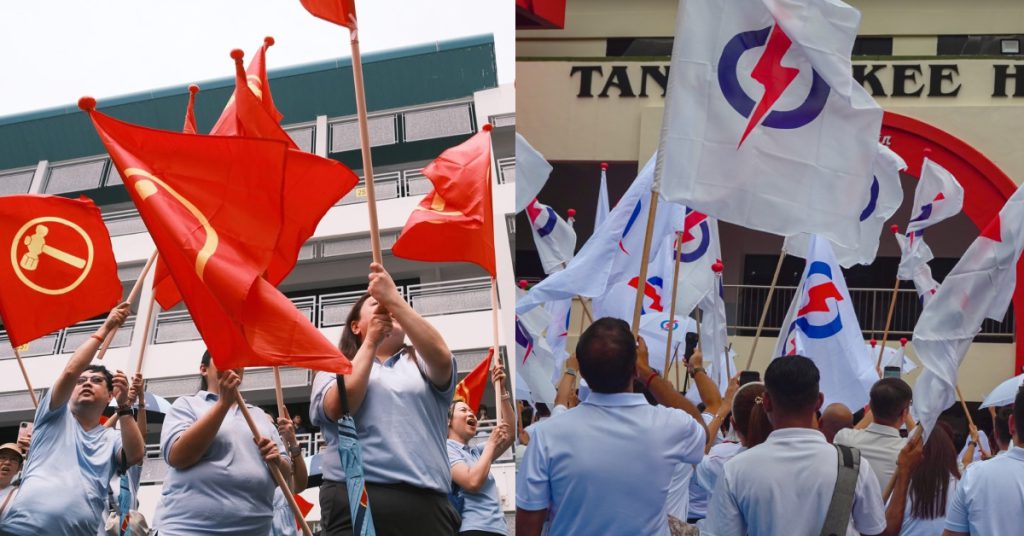
Nomination Day for GE2025 will likely be remembered as one of the most eventful in recent memory—defined not by spectacle or fiery speeches, but for the quiet calculations, last-minute reshuffles, and one particularly unexpected walkover that reshaped the electoral map.
Behind the scenes, both the People’s Action Party (PAP) and the Workers’ Party (WP) engaged in a series of coordinated moves that suggest a more fluid and competitive political environment than in years past.
A surprise exit in Marine Parade–Braddell Heights
Perhaps the most surprising development came in Marine Parade–Braddell Heights (MPBH) GRC, where the WP—long seen as preparing for a contest—ultimately did not field a team.

Supporters who gathered at Kong Hwa School on Nomination Day, expecting a contest, were left surprised when no WP candidates appeared.
As a result, the PAP team, anchored by Speaker of Parliament Seah Kian Peng, won by walkover. It was the only uncontested constituency in this election, and the first walkover since 2011.
WP chief Pritam Singh explained the decision as a difficult one, citing the redrawing of electoral boundaries and the need to focus limited resources.
Still, the late announcement drew criticism, including from other opposition parties who suggested they might have contested had they known sooner.
Punggol emerges as a key battleground
Where WP pulled back in MPBH, it doubled down in Punggol GRC—a new constituency formed near its stronghold in Sengkang.

The party fielded senior counsel Harpreet Singh Nehal, one of its most high-profile new candidates, alongside three other first-timers.
It was a bold move in a constituency with no prior contest history, but clear strategic potential.
The PAP responded in kind. At about 11:20 am on Nomination Day—less than 40 minutes before the deadline—Deputy Prime Minister Gan Kim Yong arrived at Yusof Ishak Secondary School to file his nomination.
Notably, according to a report on Straits Times, his name was handwritten on the nomination papers, a sign of how last-minute the decision was.
Deputy Prime Minister Gan had initially been slated for Chua Chu Kang GRC. His late switch signals the weight the PAP places on defending Punggol, especially with the retirement of Senior Minister Teo Chee Hean, who had anchored the area.
Known for his steady hand during the COVID-19 crisis and his new role as chair of the Singapore Economic Resilience Taskforce, Deputy Prime Minister Gan brings both national stature and experience to the slate.
He is joined by Sun Xueling, a well-regarded incumbent whose personal appeal and strong ground presence could prove influential in what is shaping up to be one of the most closely watched races of this election.
East Coast isn’t the fight this time
Compared to the high-profile shifts in Punggol, the PAP’s approach in East Coast GRC was noticeably more restrained.
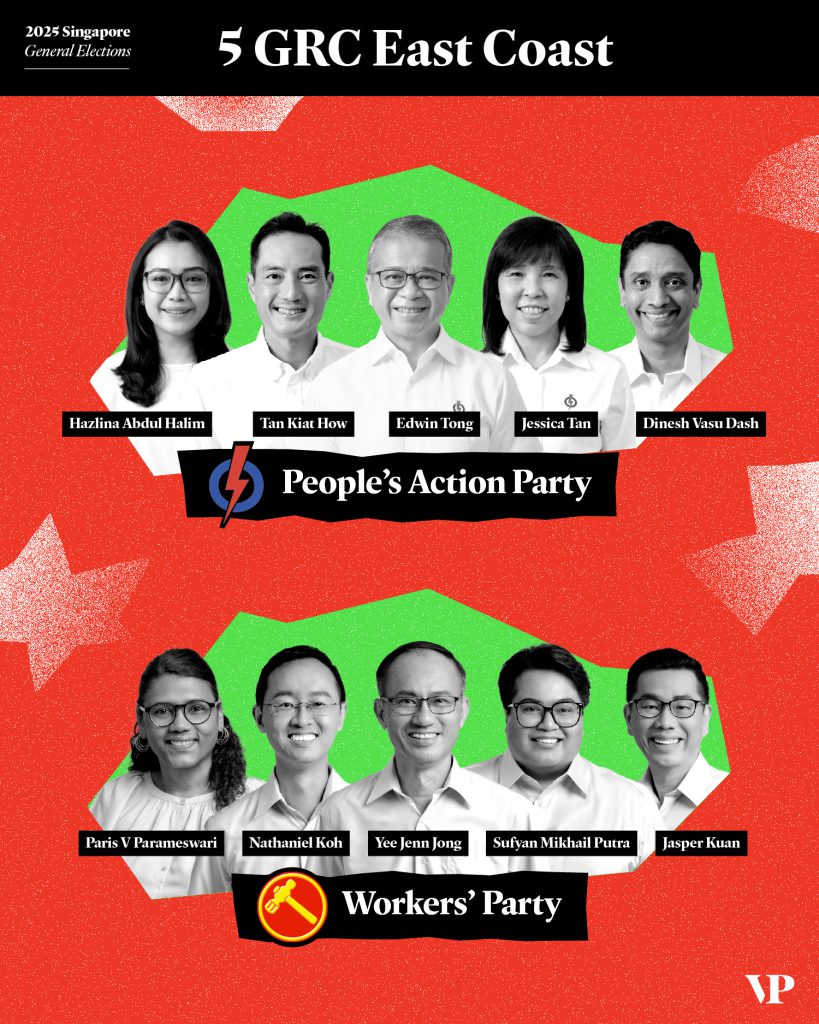
Minister Edwin Tong leads a seasoned line-up, joined by Senior Minister of State Tan Kiat How, long-serving MP Jessica Tan, and new candidate Hazlina Abdul Halim.
It’s a team that reflects stability over spectacle—experienced, consistent, and largely familiar to residents on the ground.
There had been considerable speculation that the WP might make a bold play for East Coast, potentially fielding senior counsel Harpreet Singh or even party chief Pritam Singh—moves that would have raised the stakes significantly.
But the WP instead chose to field veteran Yee Jenn Jong, also a steady figure with prior campaign experience in the constituency.
The PAP appears to have accurately gauged this and calibrated its team accordingly—experienced, but without redeploying heavyweight ministers.
What the last-minute moves say about this election
The PAP’s decision not to field a Cabinet minister in the Marine Parade–Braddell Heights GRC—traditionally a given for each GRC—reflects a shift in strategy.
With limited leadership bandwidth and multiple constituencies requiring reinforcement, the party made pragmatic calls, reallocating ministers where needed most.
These moves were not random. In recent weeks, the PAP had already repositioned key figures: Indranee Rajah from Tanjong Pagar to Pasir Ris–Changi, and Law Minister K. Shanmugam leading a revamped team in Nee Soon GRC.
The final set of deployments—many revealed only hours before nominations closed—point to a dynamic campaign strategy shaped by close tracking of WP’s potential plans.
Prime Minister Lawrence Wong, addressing the press after nominations, acknowledged the complexity of the moment.
“I fully expect this election to be a tough contest,” he said. “My team and I will work very hard to make our case to Singaporeans and to win every vote in this changed world.”
For both major parties, GE2025 presents significant tests.
PM Wong leads the PAP into its first election under new leadership, at a time of global economic uncertainty.
For the WP, the campaign unfolds under the cloud of Pritam Singh’s ongoing appeal against a recent court conviction.
The next nine days of campaigning will be crucial, especially for candidates introduced or reshuffled at the last minute, who must now work quickly to establish rapport with residents.
What Nomination Day made clear is this: Singapore’s political landscape is evolving. Strategic ambiguity, tactical shifts, and constituency-by-constituency battles are becoming more prominent.
Now that the election season has begun, both parties must convince voters that their calculated choices were the right ones.
Check out our GE2025 microsite for the latest election-related news, find out which constituency you belong to, and who’s running where on the election battleground here.
Also Read: GE2025: Punggol GRC is the Workers’ Party’s biggest opportunity but also the toughest fight
Featured Image Credit: Shutterstock/ Workers’ Party
She grew her home-based biz into a cafe that catered IU and SUJU’s S’pore shows, here’s how

She had a career in the skies, but it was lost overnight when COVID-19 hit.
Instead of feeling demoralised, Chanel Li decided to turn to something she had enjoyed from a young age—baking—as a way to tide her through the tumultuous period.
From her home kitchen, she started Whisking Bakes in 2020, selling basque burnt cheesecakes—a dessert that surged in popularity during the pandemic.
However, as the hype died down, the business began losing its traction. At its lowest point, Whisking Bakes only received one order per week.
Unsure of how to move forward with her business and career, Chanel decided to take a two-month break to recalibrate and explore new ideas—one of which led to her first major breakthrough just as the Chinese New Year period approached in February 2022.

Her experimental bake, orh nee (yam paste) tart balls, sold out within minutes of launching order slots and continued to grow in popularity.
Despite this, Chanel didn’t plan to turn Whisking Bakes into a full-fledged business, as she still considered returning to the aviation industry at that time—until an interview with Mothership had her phone “exploding” with DMs, calls, messages and enquiries.
To cope with the demand, she took a leap of faith and opened a commercial kitchen located at Tai Seng in August of the same year. “After all, I was only 23 with nothing to lose,” added Chanel.
Opening a cafe

According to Chanel, the cost of opening her commercial kitchen amounted to S$30,000, funded by her earnings from her home bakery. To cut costs, she undertook the majority of the renovations herself, with the help of her husband and family.
However, after just shy of a year, she soon decided to move out of the commercial kitchen due to frequent power trips that hindered her operations, and to search for a bigger space that could accommodate a dine-in cafe.
Although she eventually found a shop space at Lavender, the path to opening was anything but a piece of cake. Her landlord had forgotten to submit a specific document when seeking approval for the cafe’s operation, resulting in a month-long delay.
Chanel also had to confront her inexperience in running a cafe, so she spent time observing how different businesses operated. She even took on a part-time barista role at Lola’s Cafe to learn the ropes, as well as a barista course at Common Man Coffee Roasters.
Armed with new skills, she opened her cafe in August 2022, specialising in taro desserts.
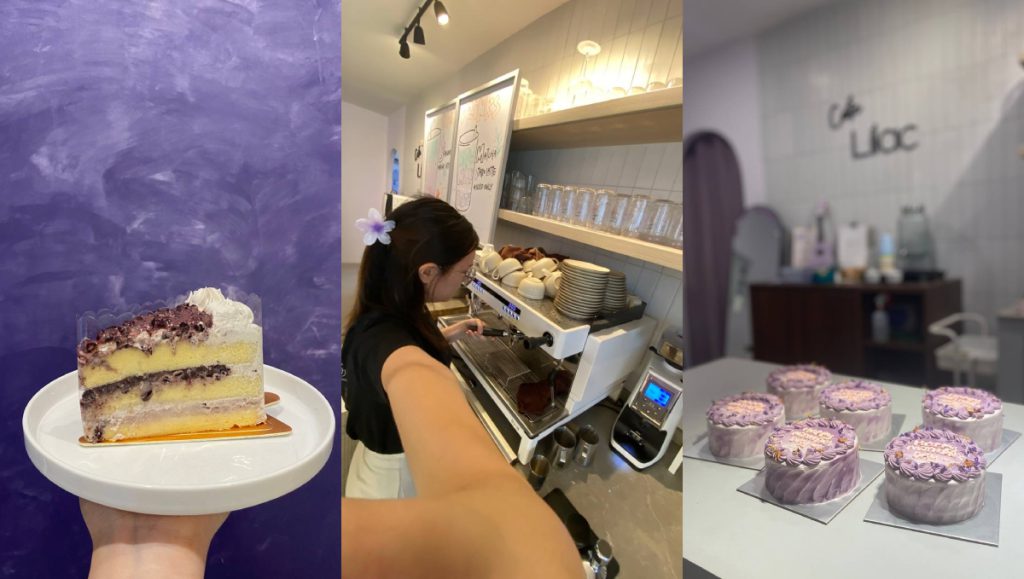
But then came another challenge: the layout of the cafe left her team working in cramped conditions, and the location itself made it easy for customers to miss the store, which resulted in a drop in sales.
This led Chanel to make another hefty gamble—to renovate the entire cafe once more, which she claimed cost an additional S$55,000.
While she admitted it was a significant investment, it was a strategic move to support the brand’s growth in the long term. She also took the chance to rebrand the cafe, expand its menu, and improve the overall ambience.
After a month-long renovation, the cafe opened its doors once more—this time under a more fitting name: Cafe Lilac.
Baking for music superstars and K-POP idols
According to Chanel, it took Cafe Lilac about six months to break even, and the business has since grown to become a six-figure venture.
Along the way, she’s also had the rare opportunity to bake for music superstars including IU, Super Junior, and Joker Xue.
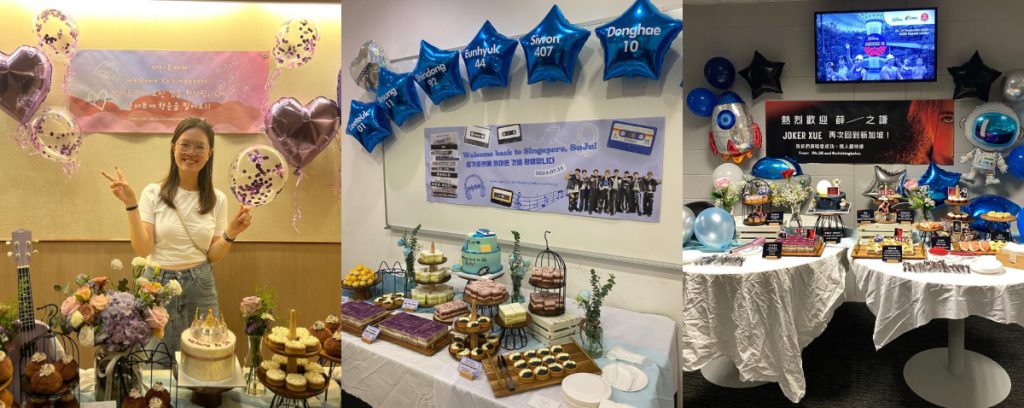
All it took was a single message from Chanel to a concert organiser, offering to prepare a dessert table for IU’s two-day concert in Singapore last year.
“Being a K-pop fan, I know concerts often have cakes or desserts for the idols. I did it without much expectation, but one day, I received an email back, getting the thumbs up from the organisers,” she explained.
With a strong desire to give the best impression possible, Chanel and her team went “all out” in their preparations, from crafting detailed decorations to hand-piping a cake that matched her album cover.
Their dedication impressed the concert organisers, which helped them land more concert deals.
The cafe also received attention from the artistes’ fan clubs, who began partnering with Cafe Lilac for fan cafe events and concerts. These collaborations helped them secure numerous opportunities in 2024, with more to come this year.
It takes “a lot more than good food” to survive
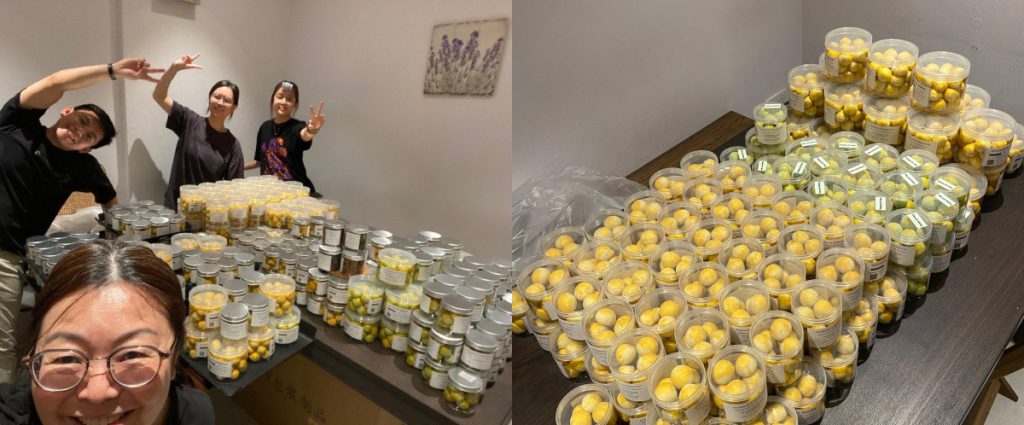
While having a niche in taro desserts and drinks has helped the business stand out in the competitive F&B scene, it has also turned out to be a double-edged sword for Cafe Lilac. It loses out on a significant portion of the Singaporean crowd who simply don’t enjoy taro.
Ensuring that the business remains relevant has become an ongoing challenge for Chanel, who has observed the rapidly shifting preferences of consumers. “I think it takes a lot more than just good food [to survive.]”
Hence, Cafe Lilac is looking to expand its non-taro menu to cater to a wider audience, including those who are not huge fans of taro.
As for her long-term goals, Chanel states she doesn’t want the business to grow “too much.” While this seems contradictory to what many entrepreneurs strive for, she explained that her focus is solely on creating desserts her customers enjoy and building a company that journeys alongside its staff.
I don’t wish for us to become a multi-million dollar company where each staff [member] is just a part of the machine. I hope that everyone who works with us gains something out of the experience and achieves what they want in life.
Chanel Li
Now 27 years old, Chanel has always operated the business on a whim. While the journey was far from smooth, one thing is for sure: her hard work has borne some sweet fruits along the way.
- Learn more about Cafe Lilac by Whisking Bakes here.
- Read more stories we have written on local businesses here.
Also Read: How this S’porean duo grew their bakery from beyond the home kitchen to 3 outlets & a cafe
Featured Image Credit: Cafe Lilac by Whisking Bakes
GE2025: Punggol GRC is the Workers’ Party’s biggest opportunity but also the toughest fight

Disclaimer: Opinions expressed below belong solely to the author.
When the PAP unveiled its Marine Parade–Braddell Heights GRC slate just two days before Nomination Day, I noted that the lineup was so formidable that the Workers’ Party might rethink going head-to-head.
And yesterday, Singapore’s largest opposition party did just that—surprising many with a last-minute pivot.
Instead of contesting Marine Parade, it fielded its star candidate, senior counsel Harpreet Singh, to lead the charge in Punggol GRC.
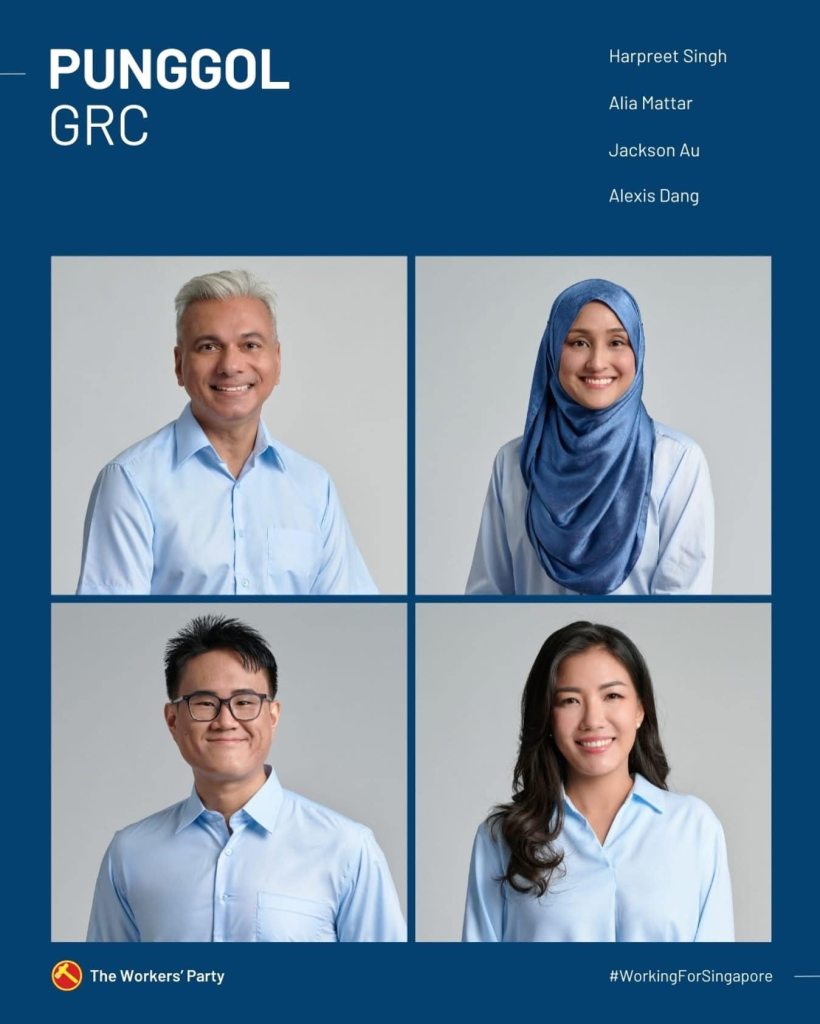
The move came as a huge surprise to many voters in the East. Harpreet Singh had been seen on party walkabouts in the area over the past two to three years, fueling speculation that he would contest Marine Parade—or, if not, East Coast GRC.
A unique opportunity?
Back in March, after the EBRC report was released, I noted that the newly redrawn Punggol constituency appeared to be an appealing target for the Workers’ Party—its close proximity to Sengkang and similar size and demographics made it a natural fit.
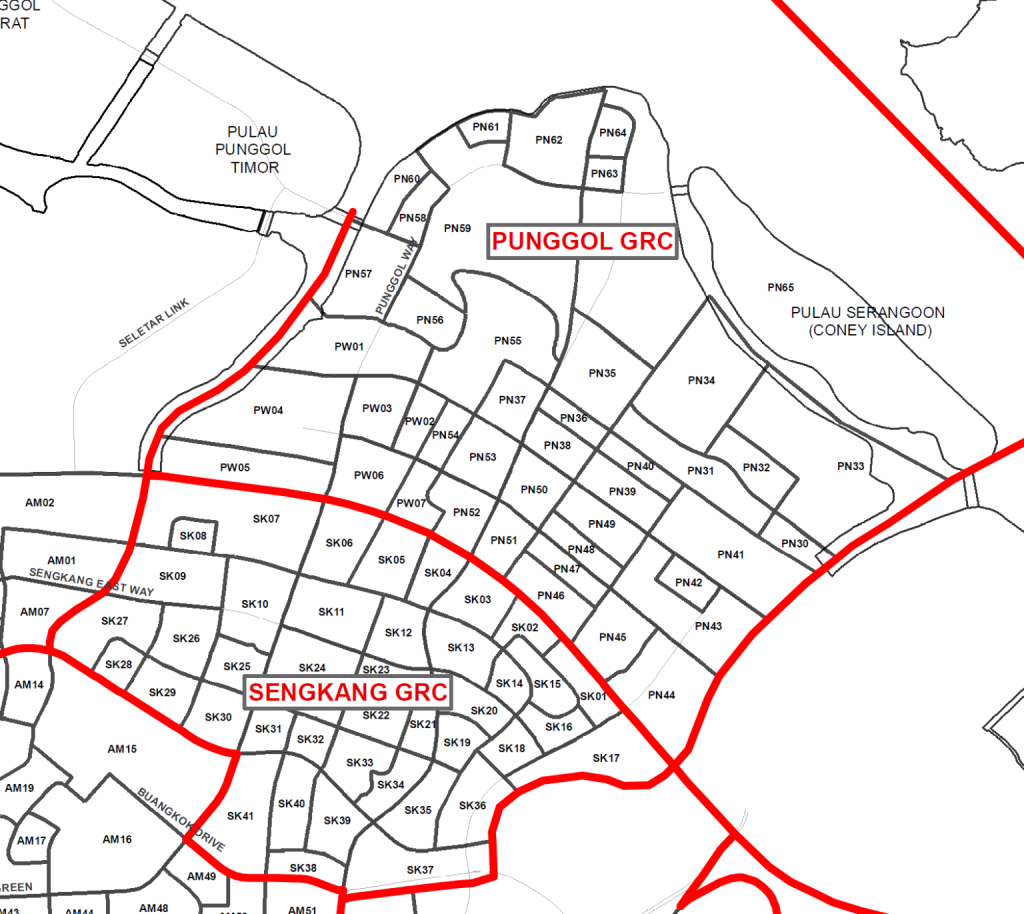
It’s clear the WP leadership saw the same opportunity and made the calculated decision to contest Punggol—though it came at the cost of abandoning voters in the East Coast.
It’s a bold and contentious move, especially after years of groundwork and public signals pointing toward a run in Marine Parade. If it pays off, though, the party could strengthen its foothold in the North-East region.
Still, voters in Marine Parade may feel let down, and many Singaporeans might view the sudden switch as unfair. After all, expectations had been built.
That said, PAP’s team in that particular GRC might have spooked the Workers’ Party, which doesn’t want to see Harpreet Singh lose—or at least not without a good fight.
The problem is that the fight in Punggol is not going to be easy either.
PAP responds with Gan Kim Yong
In response to the unfolding developments, the PAP swiftly reshuffled its slate, moving Tan See Leng from Marine Parade to Chua Chu Kang, where he steps in for DPM Gan Kim Yong, who has been deployed to counter the Workers’ Party challenge in Punggol.
Tan is now tasked with filling the shoes of Teo Chee Hean, who retired from politics this year, leaving the area without a heavyweight anchor. But it remains to be seen whether he’ll prove to be a formidable opponent for the Workers’ Party in this battleground.

Somewhat unusually, the PAP’s strongest asset in Punggol may not be a heavyweight minister, but Sun Xueling, whose likability is hard to rival.
Soft-spoken and warm in demeanour, the Senior Minister of State for Home Affairs and Social and Family Development is known for her relatable presence—she even reads children’s books online in her spare time. She’s an MP whom few Singaporeans would want to see exit Parliament.
That’s partly because much of the opposition’s appeal lies in discontent with certain policies and personalities. But Sun isn’t one of them—she’s largely free from controversy, making her a difficult figure to campaign against.
Now paired with DPM Gan Kim Yong, who also serves as Minister for Trade and Industry and Chairman of the Monetary Authority of Singapore, the PAP has reinforced its frontline with a high-powered duo.
From a tactical standpoint, Punggol presents a high-upside opportunity for the Workers’ Party.
Its adjacency to Sengkang, coupled with a relatively young and diverse demographic, makes it fertile ground for opposition inroads. However, the PAP’s response—deploying both a well-regarded incumbent and a senior national leader—raises the stakes considerably.
For the WP, this is not just a high-reward contest; it is also the most formidable team they will likely face this election.
Check out our GE2025 microsite for the latest election-related news, find out which constituency you belong to, and who’s running where on the election battleground here.
Also Read: GE2025: From candidate switches to even a walkover, here are the key surprises from Nomination Day
Featured Image Credit: Workers’ Party/ Graphic designed by Vulcan Post
This biz helps brands in M’sia reach cities & kampungs with its 38k+ retail network
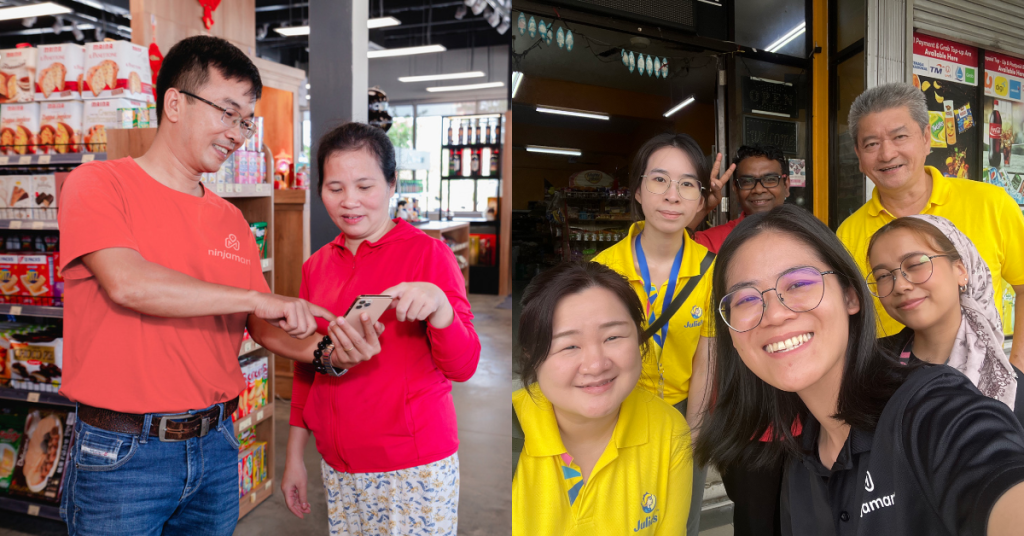
[This is a sponsored article with Ninja Mart.]
Even in this day and age when ecommerce is increasingly contributing to Malaysia’s GDP, the importance of having an in-store presence cannot be understated.
It’s that emotional connection of being able to see and touch the packaging in person that can help customers envision the product as part of their lives, leading, hopefully, to a purchase.
But getting your product on store shelves in the first place can be a whole challenge in and of itself.
Especially with small retailers who often fall outside the reach of traditional distributors, establishing trust can take time. Even for big name brands, a new product is still a leap of faith that not many retailers are eager to take from the outset.
And that’s where Ninja Mart steps in, a distribution solution by Ninja Van designed to seamlessly connect brands with retailers.
From urban to rural areas
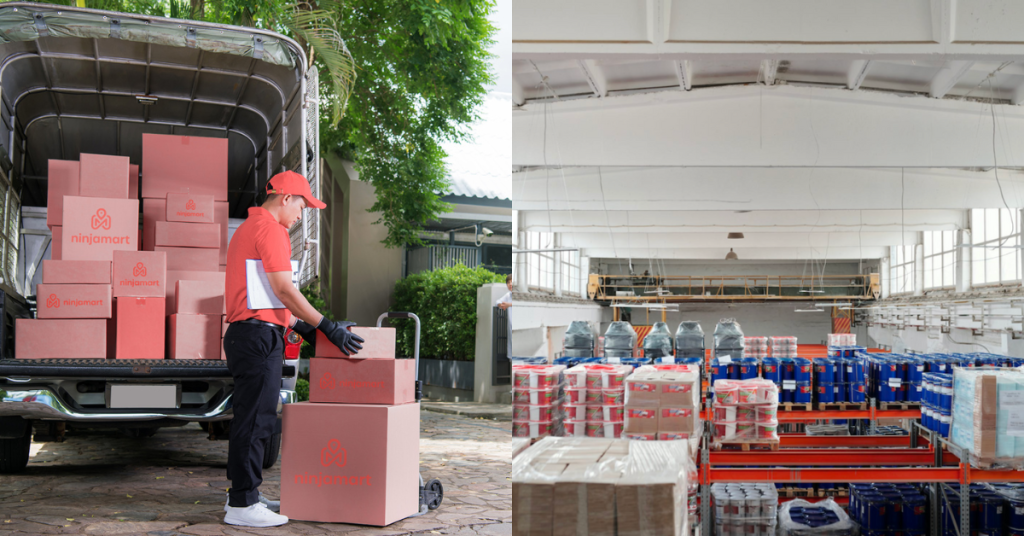
Ninja Mart was launched in 2018 with a particular focus on getting fast-moving consumer goods (FMCGs) to rural and semi-urban areas. Think perishables in high-demand such as snacks, coffee, and home care products.
They specialise in general trade (GT) with over 38,000 partnered grocery stores, mini-marts, and independent retailers. This, Ninja Mart tells Vulcan Post, also includes petrol station convenience stores, traditional sundry shops, and warungs.
Rural areas in particular operate on a van sales model to prevent overstocking, as opposed to the pre-order and delivery system employed in urban and suburban areas.
Dictionary time: Also known as direct store delivery (DSD), a van sales model is a distribution method where suppliers deliver goods directly to retailers. In Ninja Mart’s case, this is done through their weekly visits, where Ninja Mart salesmen will bring along grocery items with them on their weekly visits to partnered retailers, where the retailers can then make a purchase on the spot based on their store’s specific demand.
Source: Law Insider
In connecting FMCG brands with as many points of sales as possible, Ninja Mart noted that this strategy allows products to reach a larger market potential at a lower cost.
And to boost brand visibility, they also run campaigns for brands which come packaged with a variety of services.
More than just a promotional push
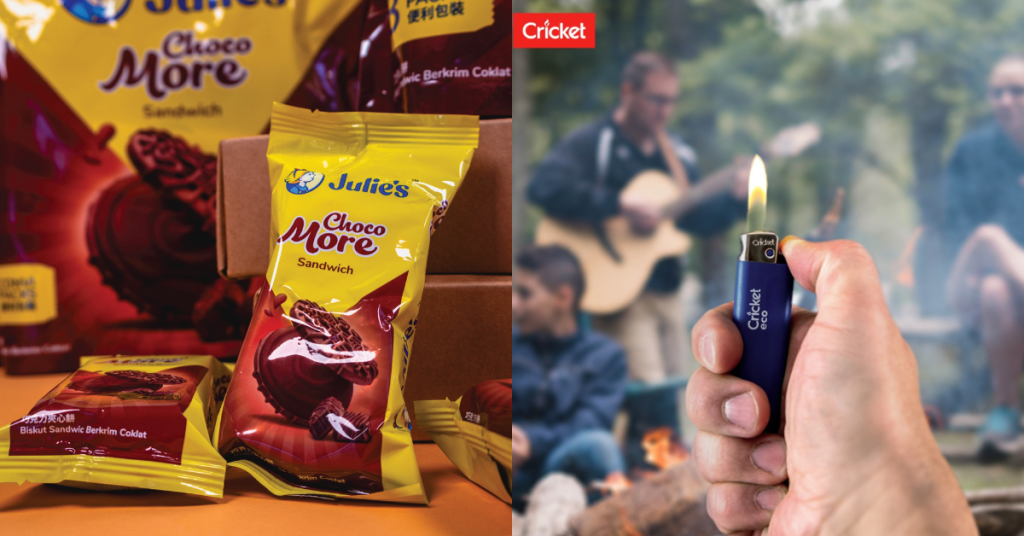
The most recent example of Ninja Mart’s campaigns is their Kongsi Rezeki, Kongxi Huat! Campaign, which ran from January to March, 2025.
It was a collaboration with a total of 17 FMCG brands. At the end of the campaign, Ninja Mart saw a reported average 37% sales increase with partnered brands reaching over 8,500 independent retailers nationwide.
Among the participants is a household name to many, Julie’s. In their case, Julie’s wanted to make a push for their Choco More series.
There were also companies like Cricket Lighters, who were struggling with maintaining pricing hygiene due to distribution issues. They were looking for a solution to stabilise their supply chain.
The success of this campaign, as Julie’s and Cricket Lighters testified, came down to several strategies that Ninja Mart employed:
1. Spend & win campaigns
Conducted on the Ninja Mart app, the idea of this strategy was to reward retailers for actively selling the products of partnered brands.
Sales would translate into tickets, and the more tickets a retailer accumulated, the higher their chances of winning prizes. This included an iPhone 16, a PS5, massage chairs, and TVs.
The end result was boosted product shelf visibility and sales as retailers now had a strong motivation to prioritise partnered brand products. This in turn strengthened brand-retailer engagement.
2. Brand focus weeks
As the name implies, brand focus weeks involved the offering of time-limited promotions for partnered brand products.
Julie’s, for instance, ran promotions which allowed buyers to mix and match their selections. Cricket Lighters on the other hand offered bundle deals with their products.
This, in conjunction with Ninja Mart’s custom point of sales materials (POSMs) including tailor-made buntings, posters, and wobblers, helped products stand out on store shelves.
The strategy turned out to be especially effective at sundry shops and mini-marts, where customers would often be overwhelmed with options.
For those on the fence, it helped that goodie bags and free samples were up for grabs too.
3. Urban Brand Tours
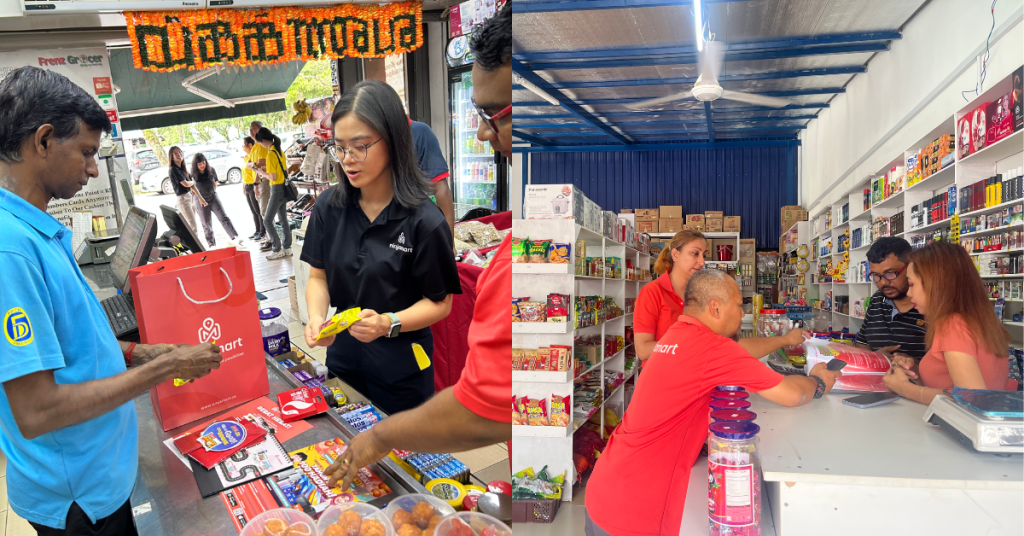
Ninja Mart also hosted on-ground engagement sessions for brands and retailers to have a closer relationship.
Brands like Julie’s and Cricket Lighters were given the chance to directly observe how Ninja Mart’s sales team communicated with retailers, providing insights into pain points that retailers may have.
This strategy, according to Ninja Mart, allowed brands to better understand the day-to-day challenges faced by their end customers, which aided in building stronger brand-retailer relationships.
4. Data-Driven Brand Collaboration
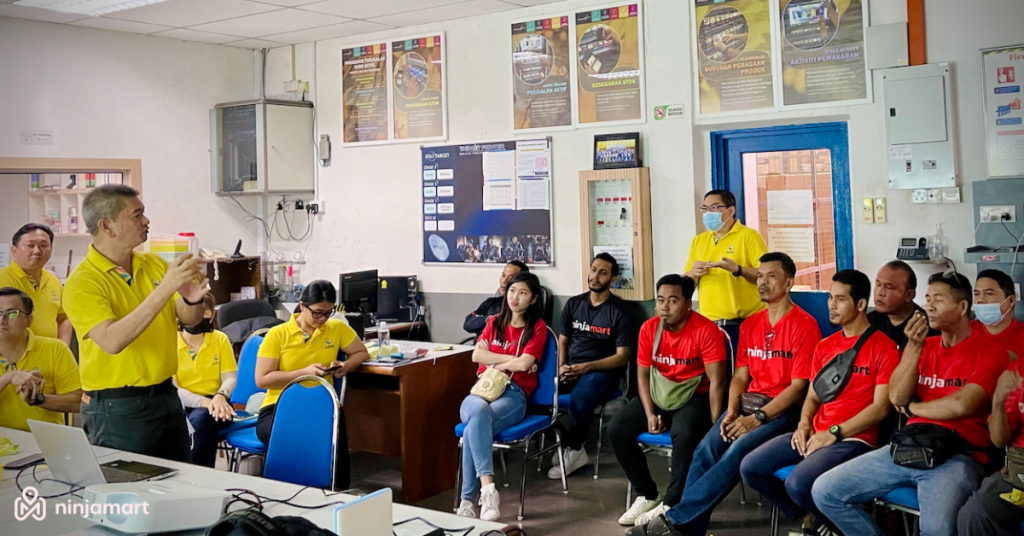
Tying all that together were Ninja Mart’s monthly performance reports which came with actionable insights for brands to better their overall business strategies.
This included:
- Sales data with product performance by region, store type, and Stock Keeping Units (SKUs) which allow brands to pinpoint high-performing outlets and underpenetrated markets
- Market coverage insights which showcases how effectively products were able to reach target areas
- Retailer feedback which includes input about pricing, consumer preferences, stock availability, and even competitor activity
With these pieces of information, Julie’s and Cricket Lighters were thus able to adjust their marketing and stock strategies, as well as craft long-term strategic growth plans
Empowering brand scaling
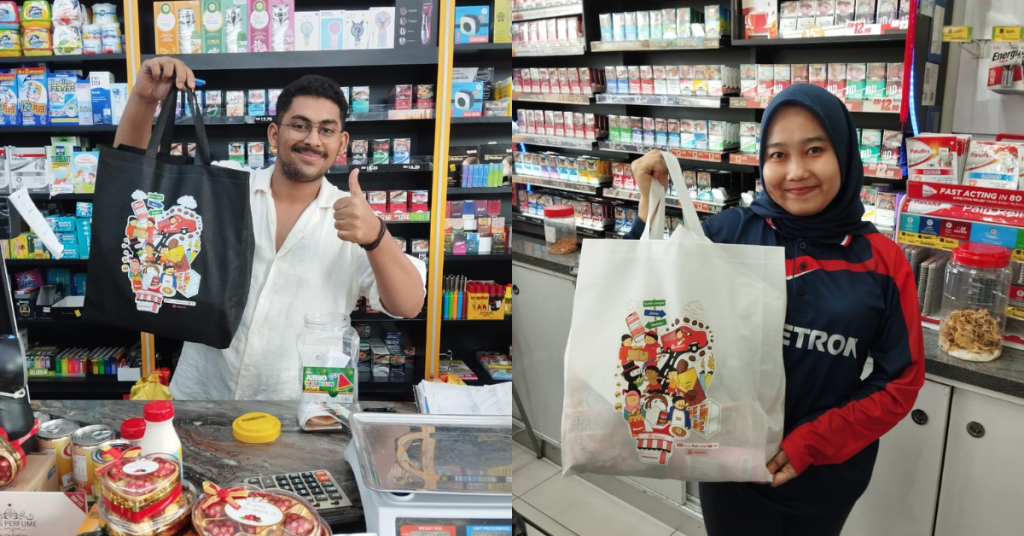
Raymond Kwan, General Manager of Julie’s, noted that through the Kongsi Rezeki, Kogxi Huat! Campaign, their Choco More biscuits were able to reach over 1,000 retail outlets across Klang Valley, Melaka, Seremban, and Sungai Buloh.
“With Ninja Van managing logistics and execution, we engaged more effectively with retailers and reached new consumers,” he added.
Likewise, these sentiments were echoed by Darren Loo, Chief Operating Officer of Cricket Lighters Malaysia. He highlighted Ninja Mart’s communication skills in particular, which led to seamless on-boarding.
“We look forward to future growth together with Ninja Mart and a successful partnership ahead,” he said.
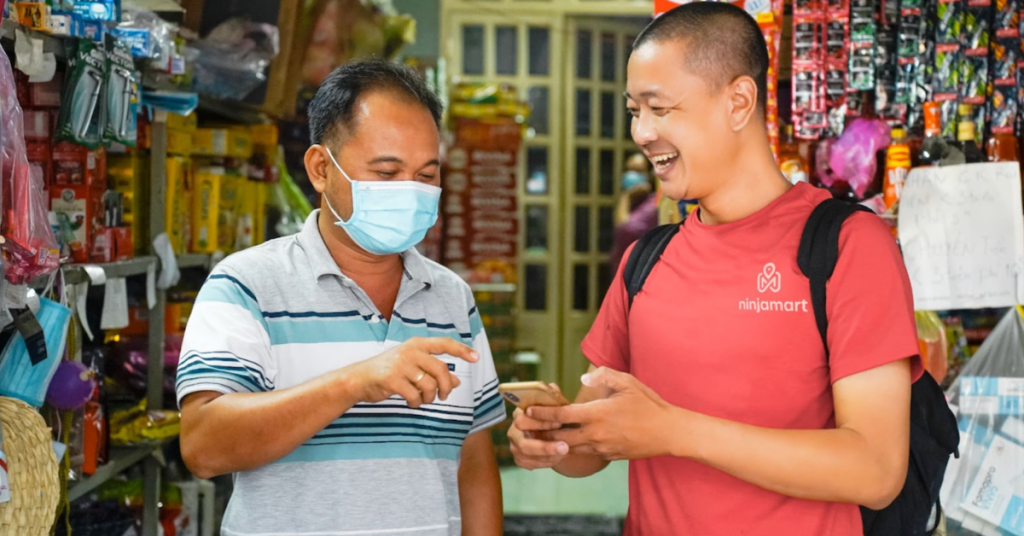
Whether a global player or a local brand trying to scale, Ninja Mart seeks to provide a flexible, inclusive model that works for brands of different sizes and maturity levels, they told Vulcan Post.
With campaigns also targeted to specific needs and not just festivities, their services might be the breakthrough you’re looking for.
Also Read: Why Brisbane & Gold Coast should be M’sian travellers’ top Aussie destinations in 2025
Featured Image Credit: Ninja Mart
American names, Malaysian pride: Why these 6 local brands use names referencing the US
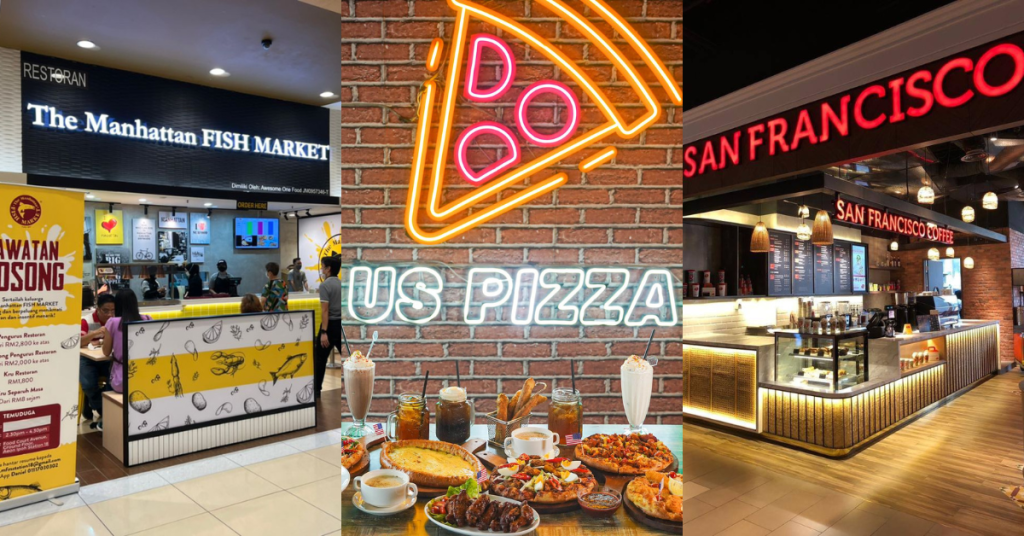
If you’ve been reading the news for the past couple of years, then you might’ve gotten the idea that the general opinion of America isn’t exactly the best at the minute.
Take for instance the Israel-Palestine conflict which lit the spark for many Malaysians to boycott big name American brands such as Starbucks and KFC, forcing outlet closures nationwide.
There’s also, of course, the tariff-fueled antics of the USA’s current president, who I’m sure needs no introduction at this point.
But regardless of your stance on the matter, I think there’s one thing that we can all agree upon: The last people that should be caught in the crossfire are local businesses.
With that, here are six Malaysian businesses that just so happen to have American names.
1. Chicago Chicken City (CCC)
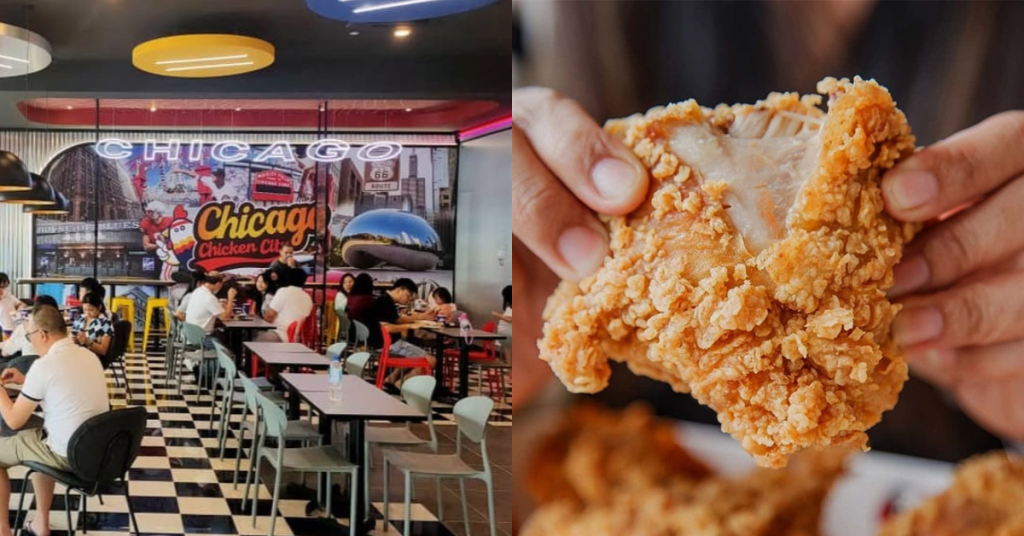
CCC is a business that we’ve covered before here at Vulcan Post, both as an article and video. With that, we actually have some personal insight on the meaning behind this local fast food chain’s name, straight from founder Adrian Chin himself.
“The name ‘Chicago Chicken City’ was chosen because it evokes a sense of familiarity and authenticity tied to the Western heritage of fried chicken,” said Adrian in our interview with him back in February.
Adding to that, he believes Chicago as a city embodies “energy,” “vibrancy,” and a “bustling urban lifestyle,” all qualities that he wants to exude with his brand.
That being said, CCC’s founder also noted, however, that their menu is rooted in local tastes and preferences.
2. The Manhattan Fish Market
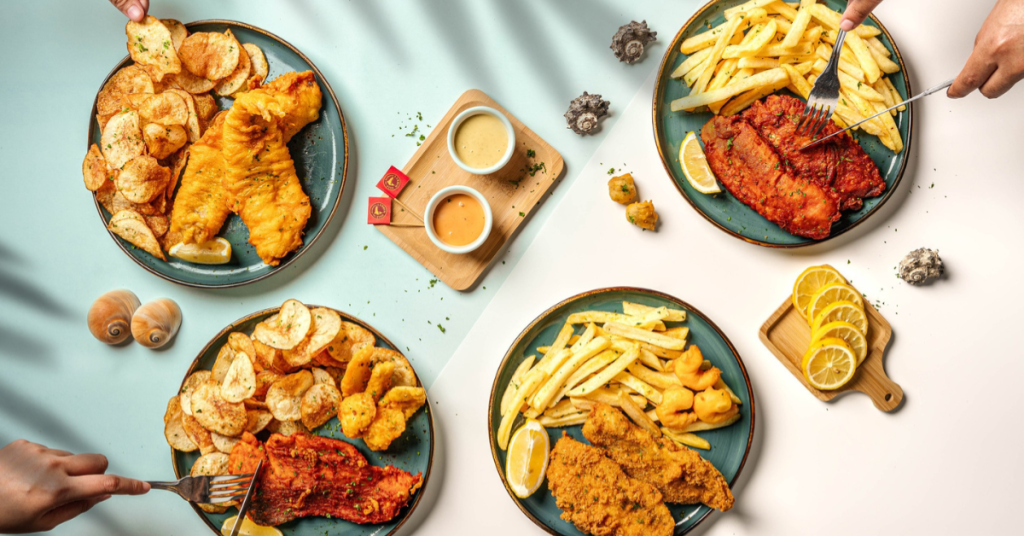
Although I may be allergic to fish now, The Manhattan Fish Market holds a special place in my heart as it was a chain my grandpa would take me to a lot when I was younger.
But as it turns out, it wasn’t always called that.
The Manhattan Fish Market actually started off as a franchise of a New Zealand fish-and-chips eatery called The Fish Shop in 2002. When the New Zealand-based company withdrew their support from Malaysia, however, local outlets scrambled to reinvent themselves in order to entice more customers.
That’s when George and his other two co-founders, Dickson Low and Jeffrey Goh, made the decision to rebrand to The Manhattan Fish Market.
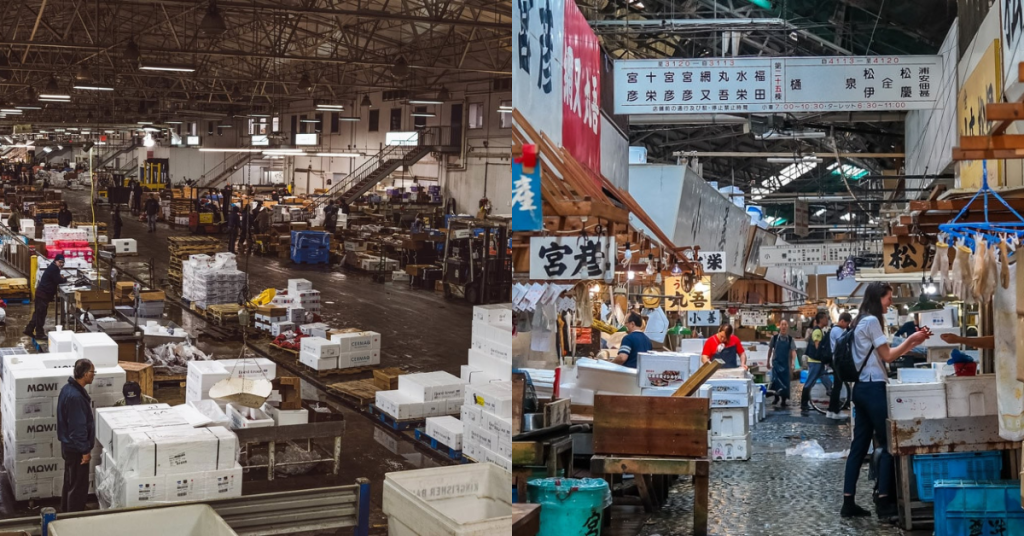
Inspiration came from what George noted in an interview with Options to be “the two biggest fish markets in the world, namely the Tsujiki Fish Market in Japan and Fulton Fish Market in Manhattan.
The rebrand worked, revenue was said to have doubled, and the business became a franchise of its own.
3. San Francisco Coffee
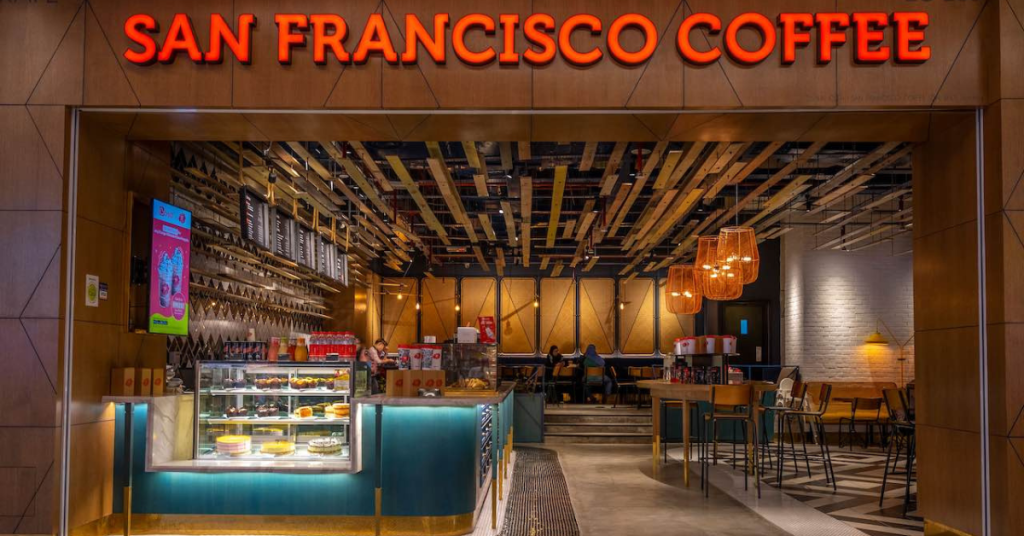
San Francisco Coffee’s name has a pretty straightforward origin. Its founder, Robert Boxwell, was from San Francisco.
According to an article by WargaBiz, Robert had come to Malaysia on a business trip for Petronas.
Noticing that the local coffee scene at the time was a little lacking, he decided to open the business in 1997.
San Francisco Coffee was then taken over by Abdul Rahim Zin amidst the 2008 global financial crisis.
4. Big Apple Donuts & Coffee
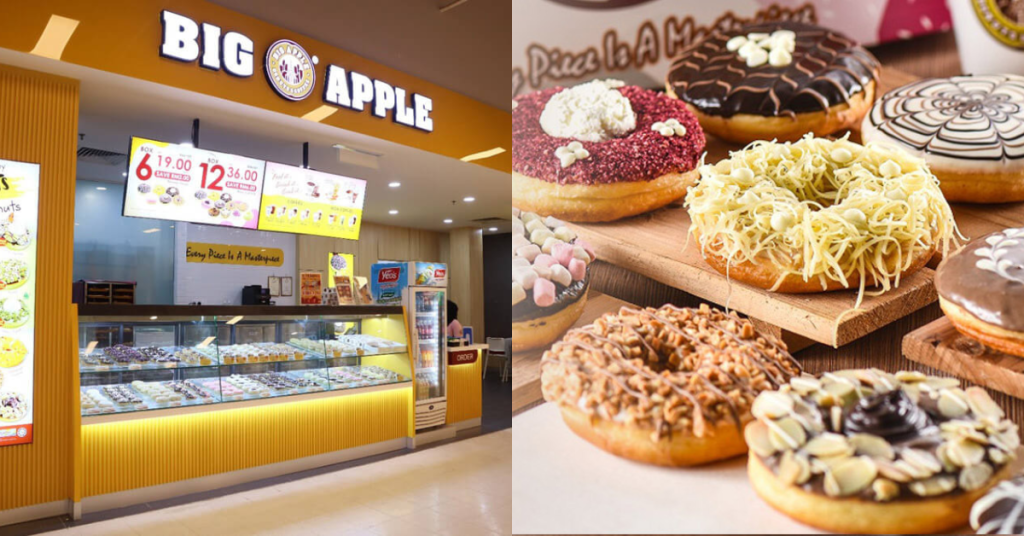
Perhaps not the most obvious example, but “the Big Apple” is actually a nickname for New York City.
Our Big Apple was founded in 2007 by Mike Chan, with its logo and concept being inspired by the “American way of life” where “people take great ideas in a free spirited fashion.”
They wanted to go big on everything from the artistry of their donuts to the flavours that they pack.
And what better way to reflect that than with the nickname of America’s largest city by population?
Do note however that this information comes from their old “About Us” page under “Logo Rationale.” This page was up from 2009 to at least 2023, but none of this is mentioned on their current one.

5. NY Steak Shack
Operating under parent company Revenue Valley alongside The Manhattan Fish Market and Tony Roma’s, NY Steak Shack was founded by two local entrepreneurs in 2014.
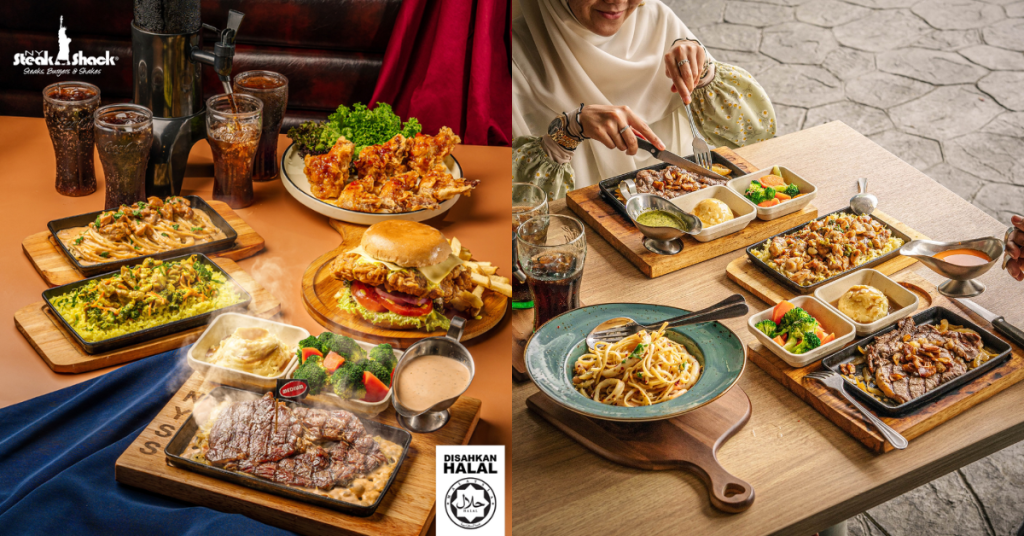
Why they named it after New York, then, is because much like us, the city is a multicultural hotspot home to a 37% foreign population with over 200 different languages being spoken.
This naturally lends itself to a vast array of food choices which NY Steak Shake seeks to emulate, bringing the Big Apple’s flavours to home soil.
Which explains why they do quite a bit more than just steaks.
6. US Pizza
Doesn’t get more in-your-face than this one.
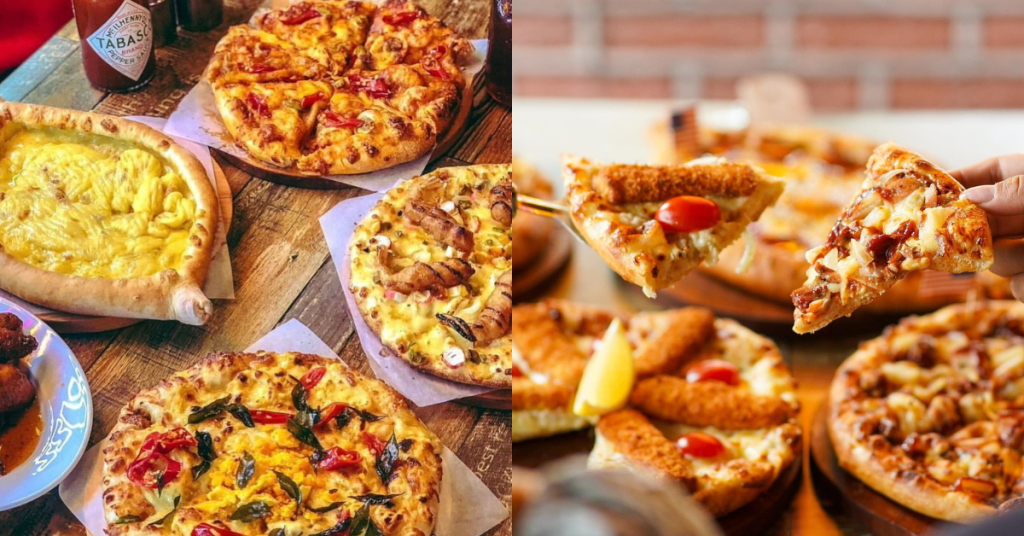
Founded back in 1997, US Pizza was started by Donald Duncan, an American who had previously worked at a pizza restaurant in Missouri.
Having developed his own recipe for dough and sauce, Donald would open US Pizza’s first (and for the longest time only) outlet in Penang after five years of working at that establishment.
He then sold the business in 2015 to Jeremy Hiew, who expanded it into the 86-outlet-strong franchise that it is today.
As for the name? That is simply a reference to the country where US Pizza’s signature recipe and Donald himself originated from: the United States (US). It does not stand for the word “us,” contrary to a now retracted claim independently made by one of the company’s outlets.
Why do we use Western names?
In short, two local businesses have American-coded names because it calls back to their origins. The other four do so because they’ve been inspired by what the American people have built for themselves in their respective home states.
It’s not a matter of ideals, or promoting the US. Perhaps it does speak to the psychology some Malaysians have whereby “west is best,” but these days, shopping and supporting local has become more and more fashionable and encouraged.
So the next time you spot one of these brand in the wild, be sure to remember that they’re not as foreign as they sound. Rather, they’re proudly Malaysian businesses.
- Read other articles we’ve written about Malaysian startups here.
Also Read: Why Brisbane & Gold Coast should be M’sian travellers’ top Aussie destinations in 2025
Featured Image Credit: The Manhattan Fish Market / US Pizza / KL Gateway Mall

